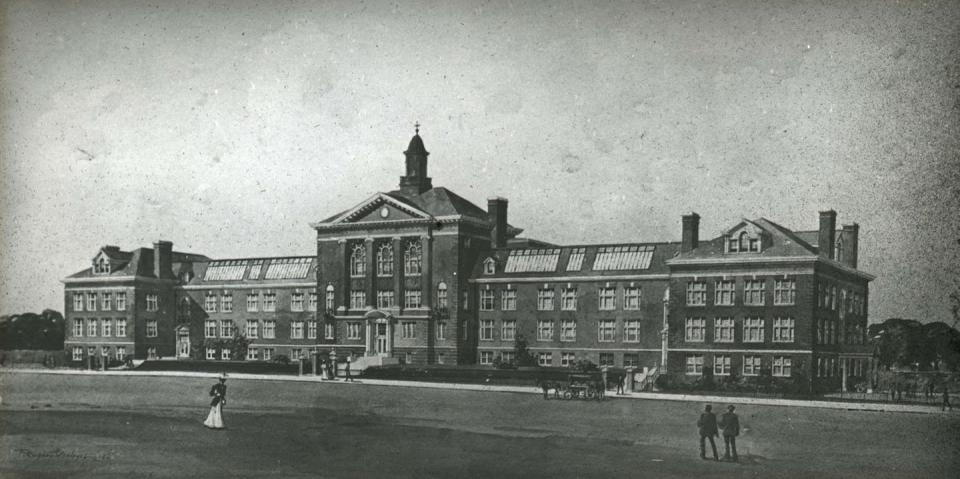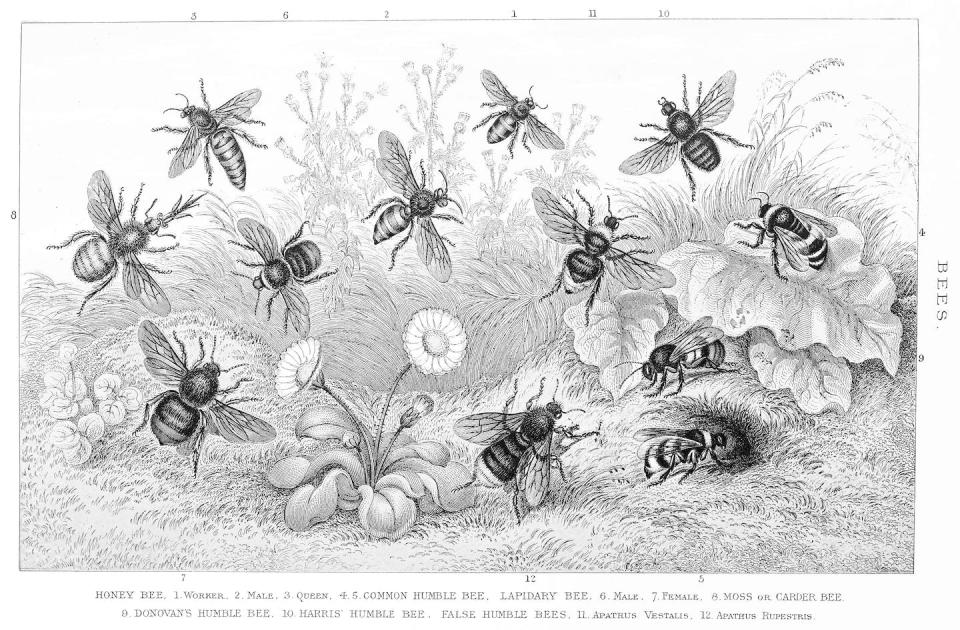On a cool autumn morning in 1908, an elegantly dressed African American man walked into St. He was walking back and forth among the pine oaks, magnolias, and silver maples of O’Fallon Park in St. Louis, Missouri. After placing a dozen plates filled with strawberry jam on several picnic tables, biologist Charles Henry Turner retreated to a nearby bench, his notebook and pen at the ready.
After an afternoon break for tea and toast (topped with strawberry jam), Turner returned to his outdoor experiment. At noon and dusk, he would place plates full of jam on park tables. As he discovered, honey bees (Apis mellifera) were reliable breakfast, lunch and dinner visitors to the sugary buffet. After a few days, Turner stopped offering jam at noon and sunset, offering treats only at dawn. Initially, bees continued to appear all three times. But they soon changed their mode of arrival and began visiting the picnic tables only in the morning.
This simple but elegantly designed experiment led Turner to conclude that bees can sense time and rapidly develop new feeding habits in response to changing conditions. These results were among the first in a series of groundbreaking discoveries Turner made about insect behavior.
Turner wrote 71 papers during his distinguished 33-year career and became the first African American to have his research published in the prestigious journal Science. Although his name is not widely known today, Charles Henry Turner was a pioneer in the study of bees and must be counted among the great entomologists of the 19th and 20th centuries. While researching my book about human interactions with insects in Earth history, I became aware of Turner’s pioneering work on insect cognition, which formed much of his groundbreaking research on animal behavior.
humble beginnings
Turner was born in Cincinnati in 1867, just two years after the Civil War ended. The son of a church custodian and a formerly enslaved nurse, he grew up under the specter of Jim Crow; A set of formal laws and unofficial practices that relegated African Americans to second-class status.
The social environment of Turner’s childhood included school and housing segregation, frequent lynchings, and the denial of basic democratic rights to the city’s nonwhite population. Despite major obstacles to his educational goals and professional aspirations, Turner’s determined spirit led him to success.
As a young child, he developed an enduring fascination with small creatures, capturing and cataloging thousands of ants, insects, and butterflies. His talent for science was just one of Turner’s many talents. At Gaines High School, he led his all-black class, securing the valedictorian seat.
Turner earned a Bachelor of Arts degree from the University of Cincinnati and became the first African American to earn a doctorate in zoology from the University of Chicago. Turner’s state-of-the-art doctoral thesis, “The Return of Ants to the Nest: An Experimental Study of Ant Behavior” was later cited in the September 1907 issue of the Journal of Comparative Neurology and Psychology.
Despite his intelligence, Turner was unable to find long-term employment in higher education. The University of Chicago rejected him for a job, and Booker T. Washington was too strapped for cash to hire him at the all-black Tuskegee Normal and Industrial Institute in Alabama.

After a brief stint at the University of Cincinnati and a temporary position at Clark College (now Clark Atlanta University), Turner spent the remainder of his career at St. Louis. He spent his time teaching at Sumner High School in St. Louis. As of 1908 his salary was as little as $1,080 per year; It was around $34,300 in today’s dollars. At Sumner, without access to a fully equipped laboratory, research library, or graduate students, Turner made groundbreaking discoveries about insect behavior.
Investigating the minds of insects
Turner’s most important findings included bumblebees, bees, sawflies, and ants. hymenoptera They are not simple primitive automatons, as many contemporaries thought. Instead, they are organisms with the capacity to remember, learn, and feel.


In the early 1900s, biologists were aware that flowers attracted bee pollinators by producing specific scents. But these researchers knew next to nothing about the visual aspects of such attractions, where bees are too far away from the flowers to smell them.
To investigate, Turner hammered rows of wooden dowels into the O’Fallon Park lawn. He glued a red disk dipped in honey to the top of each stick. Soon bees began traveling from far away to her makeshift “flowers.”
Turner then added a series of “control” sticks on top, covered with honey-free blue discs. The bees didn’t pay much attention to the new “flowers,” indicating that visual signals provided guidance when they were too far away to smell their targets. Although a honeybee’s ability to detect red remains controversial, scientists have determined that Turner’s bees are likely responding to something called an achromatic stimulus; this allowed them to distinguish between various tones and tones.
The enduring legacy of an underappreciated pioneer
Turner’s surprising findings from three decades of experiments established his reputation as an authority on the behavioral patterns of bees, cockroaches, spiders, and ants.
He was in an odd position as a scientific researcher without a university position. His situation was largely the product of systemic racism. This was also a result of his commitment to providing science education to young black students.
In addition to his scholarly publications, Turner wrote extensively on African American education. In his 1902 article “Will the Education of Negroes Solve the Race Problem?” Turner argued that trade schools were not the path to Black empowerment. Instead, he called for widespread public education for African Americans in all subjects: “If we put aside our prejudices and give the highest education to both whites and blacks, in a few decades there will be no Negro problem.”
Turner was only 56 when he died of acute myocarditis, an infectious heart inflammation. He is survived by his two children and his second wife, Lillian Porter.
Turner’s scientific contributions continue. His papers continue to be widely cited, and entomologists have subsequently confirmed many of his results.
Despite the enormous challenges he faced throughout his career, Charles Henry Turner was one of the first scientists to shed light on the secret lives of bees, the winged pollinators that ensure the well-being of human food systems and the survival of the Earth’s biosphere.
This article is republished from The Conversation, an independent, nonprofit news organization providing facts and authoritative analysis to help you understand our complex world. Written by: Edward D. Melillo, Amherst College
Read more:
Edward D. Melillo does not work for, consult, own shares in, or receive funding from any company or organization that would benefit from this article, and has disclosed no relevant affiliations beyond his academic duties.